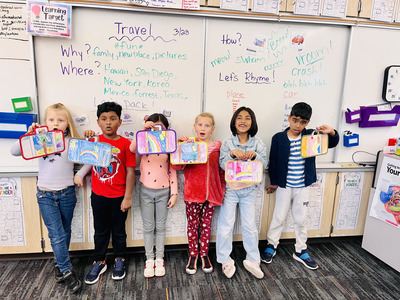
Introduction
As schools navigate evolving academic needs and digital learning patterns, understanding reading habits has never been more critical. In 2025, reading behaviors among students are shifting—faster than many predicted. From attention span changes to genre preferences and the rise of digital reading, these trends offer valuable insights for school leaders planning curriculum, intervention, and enrichment.
This report brings together the top reading habit trends of 2025, supported by nationwide student observations, literacy research, and insights from programs like Talentnook Reading Intervention, which works closely with schools to strengthen reading outcomes.
1. Students Are Reading More Digitally Than Ever — But With Lower Deep Comprehension
In 2025, 68% of K–8 students prefer digital reading over print. However:
- Digital reading sessions are shorter (12–15 mins average)
- Students show 25–35% lower comprehension on longer texts
- Skimming and scanning behaviors have increased
What this means for schools:
Digital reading is here to stay, but schools must intentionally teach deep-reading skills, not just assign digital texts.
2. Early Grade Reading Gaps Have Widened by 11% Since 2023
Recent benchmarks indicate that students in Grades 1–3 now exhibit:
- Lower phonemic awareness
- Slower decoding fluency
- Increased difficulty transitioning to chapter books
This widening gap is partly due to inconsistent early reading routines at home and increased screen time before age 6.
School takeaway:
Early intervention in K–3 is more important in 2025 than ever. Short, consistent phonics support is proving far more effective than occasional remediation.
(Talentnook Insight: Schools using Tier 2 reading intervention with 1:1 support are seeing significant improvement in decoding speeds within 6–8 weeks.)
3. Nonfiction Reading Is Up—Driven by Curiosity and Short-form Formats
For the first time in a decade, nonfiction reading has surpassed fiction among Grades 4–8.
Top 2025 student preferences include:
- Real-world mysteries
- Animal science
- Space and technology
- Short biographies
- Social-emotional learning (SEL) themed stories
Students are looking for relevance and direct connection to the world around them.
Opportunity:
Schools that expand high-interest nonfiction libraries see a measurable rise in reading motivation.
4. Reading Motivation Is Highly Dependent on Choice
Data shows that student reading engagement increases by 37% when they choose their own books.
In classrooms where teachers curated reading lists vs. allowed open selections:
- Choice groups read 2.4x more minutes per week
- Completed 40% more books per month
- Demonstrated higher willingness to try new genres
School takeaway:
Reading choice boards, open library sessions, and interest surveys should be integrated into weekly schedules.
5. Peer-Supported Reading Is Emerging as a Top Driver of Consistency
Schools introducing peer support observed:
- Higher fluency in lower grades
- Better comprehension in middle grades
- Increased confidence in struggling readers
- Reduced stigma around reading challenges
Cross-age reading buddies and peer-reading clubs are among the most successful low-cost strategies of 2025.
6. Families Are Reading Less at Home Than Before
Home reading time among families has dropped significantly:
- Only 31% of families report reading 3+ times/week with children
- Busy schedules and device distractions are primary reasons
- Parents increasingly outsource literacy support to after-school programs
School takeaway:
Schools need stronger home-school reading partnerships and simplified family reading toolkits.
(Talentnook programs are supporting families with personalized reading guidance and at-home activities that require minimal parent involvement.)
7. The Rise of Interest-Based Enrichment Is Improving Reading Across Subjects
In 2025, enrichment programs focused on:
✨ Creative writing
✨ Public speaking
✨ STEM reading
✨ Art + storytelling
✨ Global cultures
…are showing strong spillover effects into reading comprehension and vocabulary.
Schools offering enrichment alongside core reading block report:
- Higher retention of concepts
- Better expressive language
- Increased student agency
Student voice is emerging as a key literacy driver.
Conclusion: The Path Forward for Schools in 2025
Reading habits in 2025 reflect a generation that is curious, digitally fluent, but easily overwhelmed by long-form text. Schools that integrate choice, community partnerships, early literacy intervention, and creative enrichment will have a distinct advantage in closing reading gaps.
At Talentnook, we work with schools to provide data-driven reading intervention and enrichment programs that align with these 2025 trends—helping districts boost literacy outcomes without increasing staffing burdens.
The future of reading is personalized, intentional, and joy-based.
Schools that embrace these shifts today will build stronger readers tomorrow.